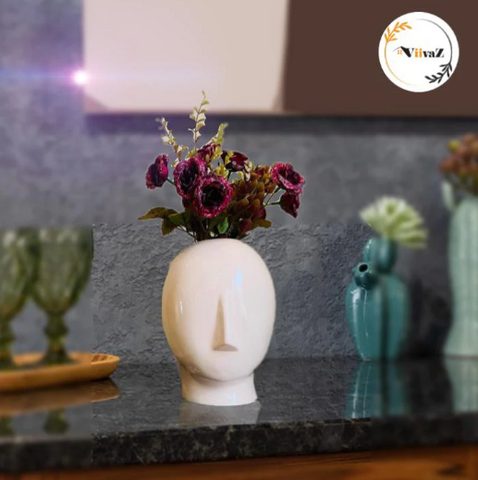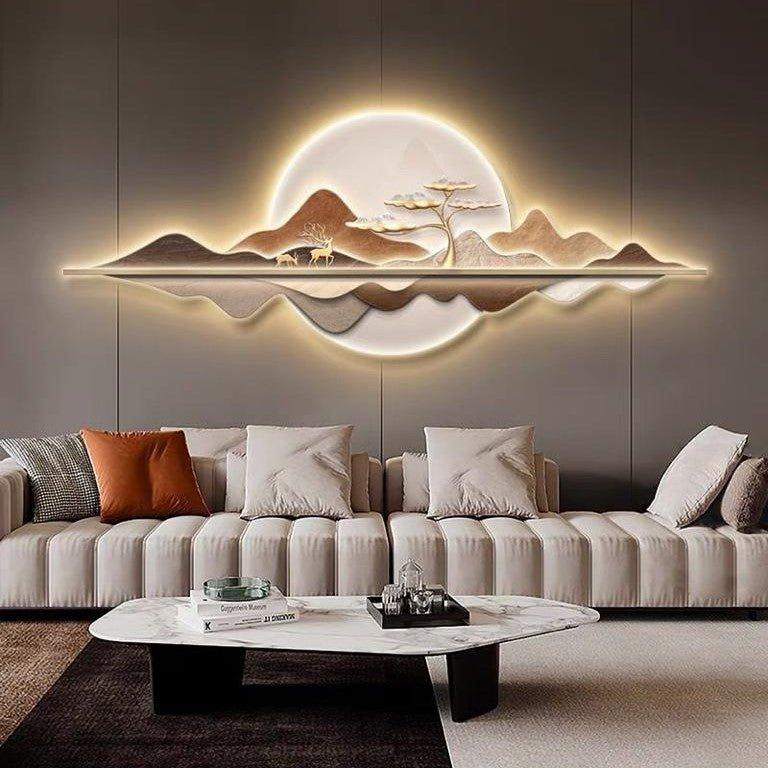When decorating plants or flowers, choosing the right container is just as important as choosing the right one. While planters and vases may seem similar, they have distinct differences that affect their functionality and aesthetics.

Understanding these differences is essential to choosing the right type of container for your needs. This blog will explore the 10 key differences between planters and vases: materials, shape and size, function, drainage, decoration, mobility, maintenance, the purpose of use, weight, stability, and cost.

Whether you are a seasoned gardener or a beginner, this information will help you decide when to select the right container for your plants or flowers. So, let's go ahead!
Material
Choosing between planters and vases requires considering the container material.
Ceramic, terracotta, wood, plastic, or metal planters are popular, with ceramic being durable and heavy, terracotta being porous, wood adding a rustic touch, plastic being lightweight and durable, and metal being sturdy and industrial.
Glass, porcelain, or ceramic vases are popular, with glass being elegant and versatile, porcelain being delicate and beautiful, and ceramic being available in various shapes, sizes, and colours.

Ultimately, the material chosen depends on the specific needs and preferences of the plant or flower, as well as the aesthetic preferences of the individual.
Shape and Size
When deciding whether to use a planter or a vase, it's important to consider the container's shape and size. Planters come in various shapes and sizes, while vases tend to be narrow and tall for displaying cut flowers.

The planter size should accommodate the plant's growth and be light enough to move. Vase size and shape affect the display of flowers, with tall vases suitable for long-stemmed flowers and shorter vases for compact arrangements.
Cylinder or cone-shaped vases offer versatility, while irregular shapes may limit flower choices. Ultimately, the shape and size should suit the specific needs of the plant or flowers, the available space, and aesthetic preferences.
Function
Planters and vases serve different functions. Plants grow in planters, which hold soil and provide a home, while vases hold cut flowers and water.
Planters may have features like drainage holes or reservoirs to store water, allowing for less frequent watering. Vases may have a narrow neck to support the stems of flowers but lack the necessary drainage and soil for plant growth.
It's important to consider the container's function and whether it suits the plant's or flower's specific needs. Factors like size, decoration, mobility, maintenance, purpose of use, cost, and aeration are also important when choosing between planters and vases.
Drainage
One significant difference between planters and vases is their drainage systems. Drainage holes or porous material in planters allow water to flow freely through the soil and prevent root rot, while vases lack drainage systems and are meant solely for holding water for cut flowers.
When choosing between a planter or vase, one must consider the drainage needs of the plants or flowers. Self-watering planters may have a built-in mechanism to prevent overwatering and ensure the right amount of moisture. Adding soil to a vase can cause stagnant water, leading to bacteria growth and the quick decay of flowers.
Decoration
The decoration is an important consideration when choosing between planters and vases.

People can decorate planters with painted designs, carved patterns, and textured finishes, and they can even design them to look like animals or objects.
Vases are often decorated with intricate designs, patterns, or etchings and can come in various colours, sizes, and shapes, even made from unique materials like crystal or marble.
Choosing between a planter or vase based on decoration depends on individual preferences and the space's style. Both planters and vases can add personality to a room, but it's essential to consider the space's overall aesthetic.
Mobility
Mobility is a key factor to consider when choosing between planters and vases. Planters come in various sizes and can be challenging to move once filled with soil and plants. In contrast, vases are smaller, lighter, and more easily portable.
When choosing, consider the space where you will locate the container and the frequency of movement required. If the container is stationary, a planter may be a more suitable option, while a vase may be a better choice if frequent movement is required.
Individual needs and the intended use of the container should ultimately form the basis for the decision.
Maintenance
Consider the maintenance required for each before choosing between planters and vases.
Planters demand regular upkeep, such as watering, monitoring soil moisture levels, and cleaning, to ensure the plants remain healthy.
To avoid the growth of bacteria, it is necessary to regularly clean vases by changing the water, rinsing the vase, and adding flower food.
When deciding between the two, consider the time and effort required for maintenance. Although planters necessitate more maintenance than vases, the effort is worthwhile for those who enjoy live plants.
Ultimately, the decision relies on an individual's willingness to care for the container and its contents, whether plants or flowers.
Purpose of Use
Designers create planters for growing and displaying live plants and vases for displaying cut flowers.
Planters offer drainage, aeration, and a stable base for roots to grow on, making them ideal for live plants.
In contrast, vases lack drainage and aeration, making them unsuitable for growing plants. Vases showcase cut flowers and add to a room's decor.
Choosing between a planter or vase based on the purpose of use depends on the intended use of the container. Planters are practical and functional for growing plants, while vases are ornamental and decorative for displaying cut flowers.
Weight & Stability
The weight and stability of online flower vases and planters also differ. Vases are generally lightweight, making them easy to move and arrange as desired. Planters, however, are heavier, particularly when filled with soil and plants, requiring greater stability to stay upright.
For this reason, many online planters come with heavy bases or stand-alone supports to keep them level despite the added weight of soil and plants.
Cost
Cost is a crucial factor when choosing between planters and vases. Planters are typically pricier than vases because they use durable materials like ceramics or stone. Artisans can create vases from a wider variety of materials, such as glass or porcelain, which can affect their cost.
In addition, the size and design of the vase may also influence its price.
When deciding between the two, one must consider one's budget and priorities. While vases may be more budget-friendly, planters may provide a better long-term investment. Ultimately, one should weigh all factors to ensure optimal value for their money.
Conclusion
To sum up, although planters and vases may appear similar at first glance, there are significant distinctions to consider when deciding between the two. These differences encompass shape, size, function, drainage, ornamentation, mobility, maintenance, intended use, and cost.
When contemplating whether to opt for a planter or a vase, it's vital to consider the individual's unique requirements and preferences. For instance, a planter would be the superior choice if the objective is to cultivate live plants. On the other hand, if the goal is to showcase cut flowers, a vase would be a more appropriate selection. Likewise, if portability is a concern, a vase may be the more appropriate option, whereas a planter could be more advantageous for individuals seeking a long-term investment.
By weighing these factors, individuals can decide whether a planter or a vase is optimal for their needs and preferences. Whether for indoor or outdoor use, a well-chosen planter or vase can elevate the charm and atmosphere of any space.












